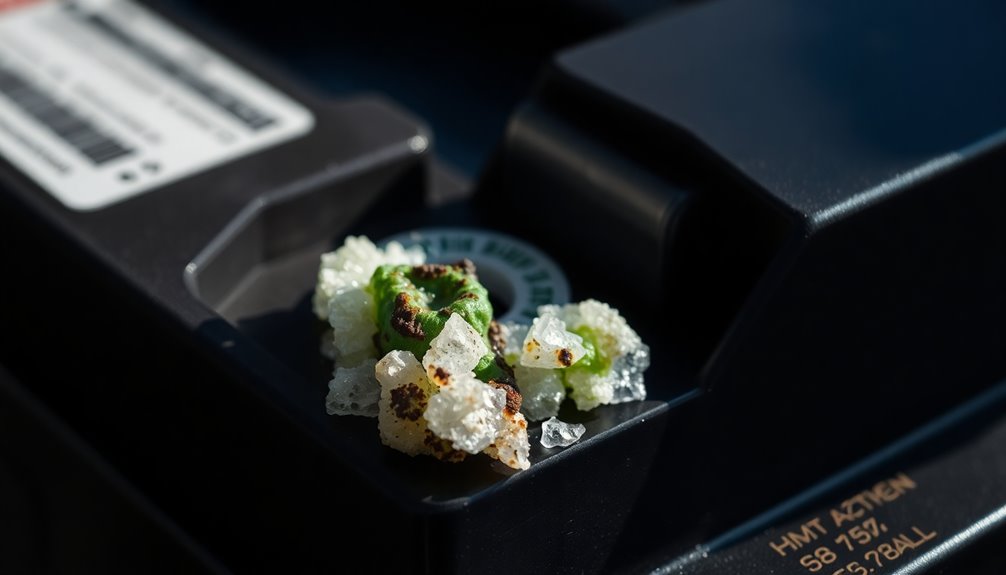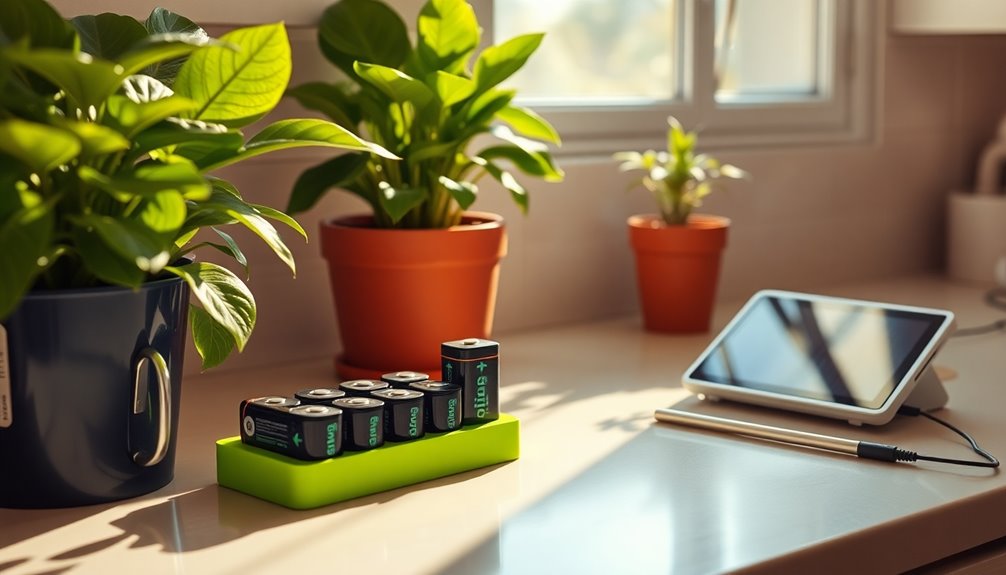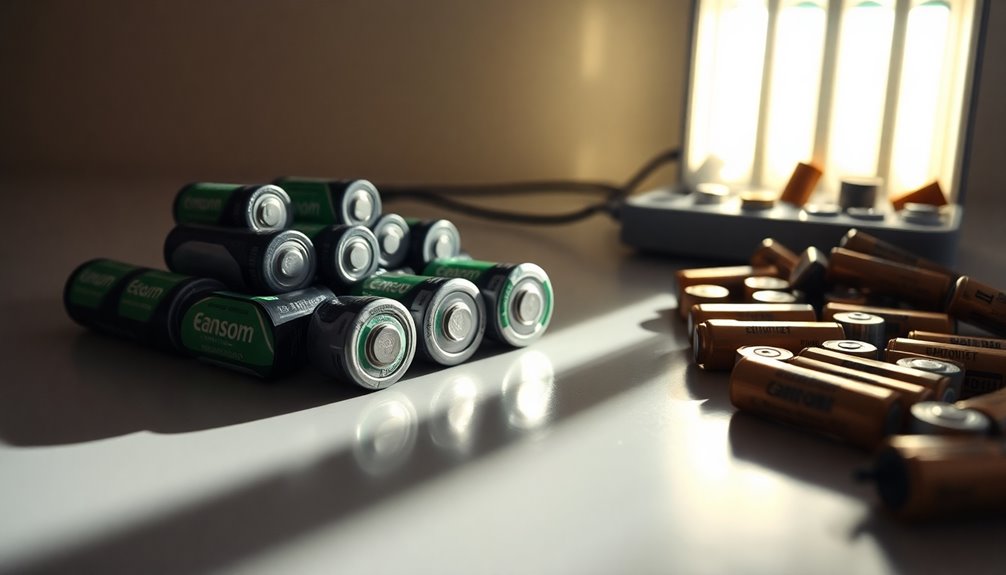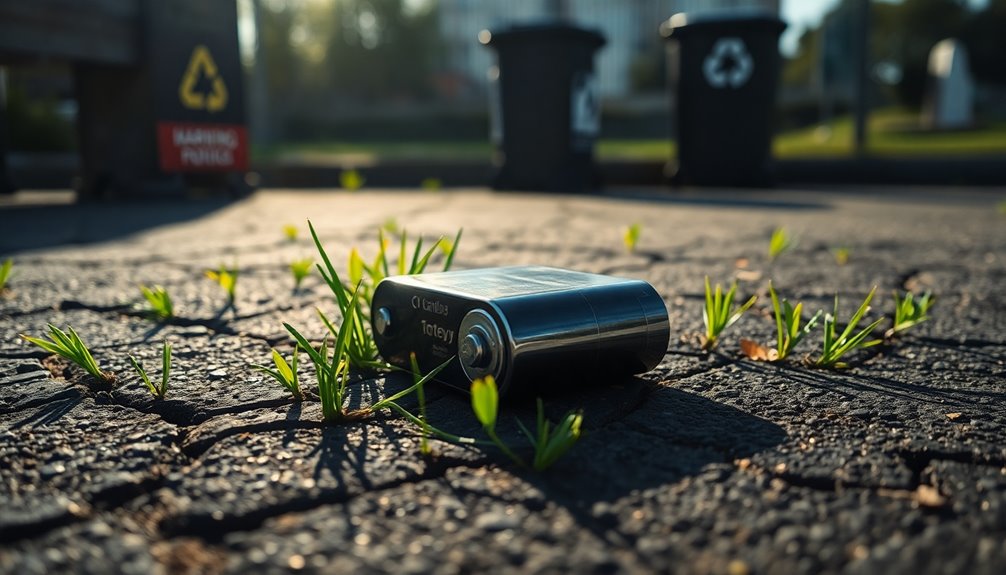Reconditioning your car battery at home is a fantastic way to save money and prolong its life. You'll need essential tools like a multimeter, battery charger with a reconditioning mode, and safety gear, including gloves and goggles. Start by removing the battery, inspecting it for damage, and checking the electrolyte levels. Cleaning the terminals and treating any corrosion is crucial. Next, charge the battery carefully and conduct tests to ensure it maintains sufficient voltage. With these steps, you can restore its performance. Stick around for more tips and techniques to make the most of your battery reconditioning process.
Key Takeaways
- Reconditioning your car battery can save you approximately $150 compared to buying a new one, extending its lifespan from five to seven years.
- Use essential tools like a multimeter, battery charger with reconditioning mode, and a desulfator to effectively restore battery performance.
- Regular maintenance, including cleaning terminals and checking electrolyte levels, enhances the reconditioning process and ensures optimal battery health.
- Proper safety gear and a ventilated workspace are crucial when handling batteries to prevent accidents and exposure to harmful substances.
- Techniques like desulfation can significantly improve a battery's ability to hold a charge, often matching the performance of new batteries.
Essential Equipment and Safety Gear
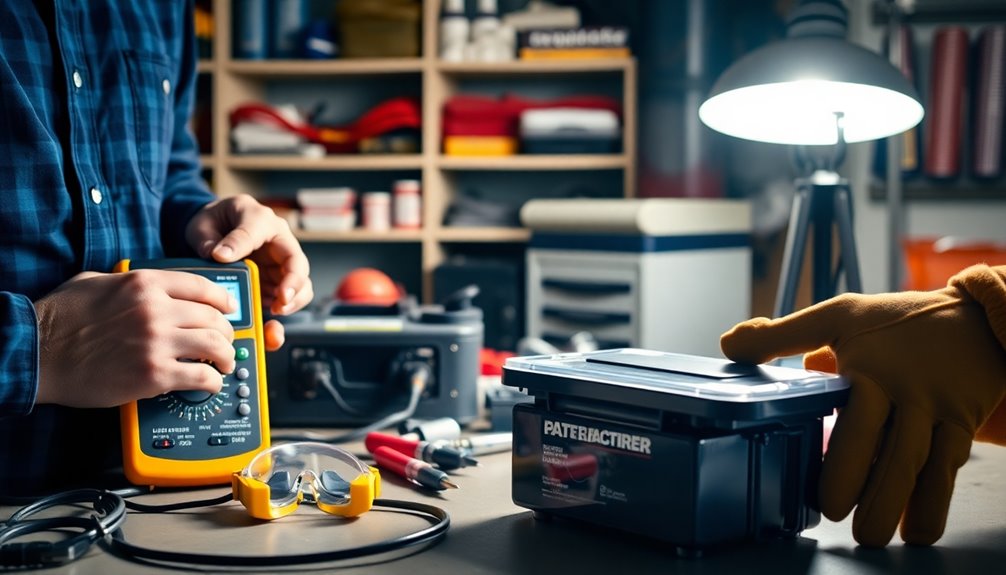
When reconditioning a car battery at home, having the right equipment and safety gear is crucial for both effectiveness and safety.
First, you'll need a multimeter or voltmeter to measure the battery's voltage and assess its condition. A battery charger with a reconditioning mode, set to 12 V per 2 amps, is essential for the charging process. If you're working with a lead-acid battery, a desulfator will help break down lead sulfate crystals. Don't forget a flathead screwdriver to remove the cell caps and a funnel for adding new electrolyte solution. Reconditioning removes sulfates allows batteries to recharge and perform like new.
Safety gear is just as important. Chemical-resistant gloves protect your hands from acid and shocks, while safety goggles shield your eyes from splashes. An apron or protective clothing will help prevent skin and clothing damage.
You'll also want steel wool or a battery terminal cleaner for cleaning corrosion, and a toothbrush to apply your cleaning paste.
Finally, maintain a protective workspace with good ventilation to avoid inhaling harmful fumes.
With the right equipment and safety measures in place, you're set to tackle your battery reconditioning project with confidence.
Preparation and Inspection Steps
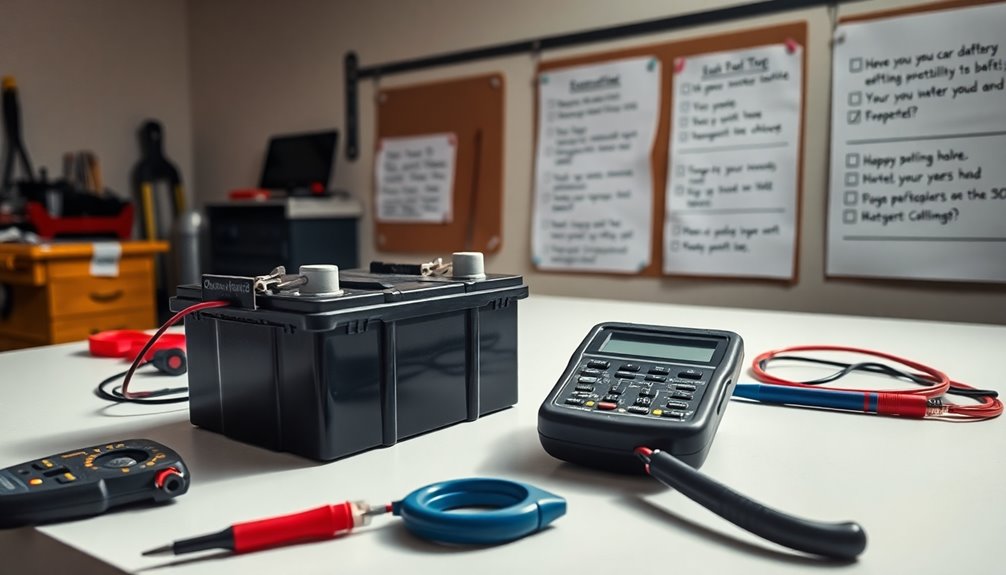
With the right equipment and safety gear ready, you can now focus on preparing and inspecting the car battery before reconditioning. Start by removing the battery from your car using a wrench, ensuring the area is well-ventilated and free from open flames. Allow the engine to cool down, then remove any caps or covers to access the battery cells.
Next, conduct a thorough visual inspection. Check for visible damage like cracks or bulges—if you find any, it's time for a replacement. Inspect the battery terminals for corrosion or looseness and verify that all connections are tight and clean. Check the fluid levels in each cell; equal levels indicate healthy cells.
Now, grab a voltmeter or multimeter to measure the resting voltage of the battery. Ideally, it should read between 12.2 and 12.6 volts. Reconditioning can help extend battery life by increasing capacity and reducing waste.
For a more in-depth assessment, perform a load test with a battery load tester to see if it maintains around 11 volts under load. Lastly, check the electrolyte levels and condition in each cell to determine if the battery can be reconditioned.
Cleaning and Corrosion Removal

How can you effectively clean corrosion from your car battery? Start by preparing a cleaning solution. Mix one tablespoon of baking soda with one cup of hot water. This mixture neutralizes battery acid and removes corrosion. If you need a thicker paste, use a two-to-one ratio of baking soda to water, ensuring that the baking soda is fully dissolved.
Once your solution is ready, apply it to the corroded areas of your battery terminals. You'll notice bubbling as the solution works to neutralize the acid. Focus on the terminals and cables to clean away the corrosion. It's essential to address this issue promptly, as corrosion can shorten battery life.
For stubborn build-up, use a toothbrush or a stiff-bristled brush to scrub the posts. If the corrosion is heavy, steel wool or a battery terminal cleaner brush will do the trick.
Remember to keep safety in mind. Wear safety goggles and gloves to protect yourself from battery acid, and make sure you have good airflow around your workspace.
Always disconnect the battery terminals, starting with the negative (-) and then the positive (+), to avoid any electrical issues. With these steps, you'll keep your battery clean and extend its lifespan.
Acid Removal and Replacement Process

The acid removal and replacement process for your car battery is crucial for maintaining its performance and longevity.
Start by neutralizing any battery acid spills. Mix 1-2 tablespoons of baking soda with 2 cups of hot water to create a neutralizing solution. Use a clean plastic bristle brush to scrub the battery and terminals, ensuring to flush the area with cool, clean water afterward. Regular inspection and maintenance are essential to prevent severe damage from corrosion.
Next, remove the battery terminal protective covers and apply a baking soda paste made from a 2:1 ratio of baking soda to water. Be careful not to let the solution enter the battery cells if they've removable caps.
For disposing of the battery acid, empty the cell contents into a bucket, adding about half a pound of baking soda to neutralize it. Make sure to dispose of the neutralized acid at a recycling center that accepts hazardous waste.
Once cleaned and dried, refill the battery cells with a new electrolyte solution using a funnel. After securing the cell caps and shaking the battery to mix the solution, check the voltage and ensure the terminals are clean and dry before reinstallation.
Charging and Testing Procedures

Start by ensuring your safety before charging the battery. Wear protective gear like safety goggles and chemical-resistant gloves, and work in a well-ventilated area to avoid inhaling any fumes.
Secure the battery in a stable position and have a baking soda and water solution ready to neutralize any acid spills.
Next, connect a voltmeter to check the battery's voltage. A healthy 12V battery should read around 12.6V; if it's between 10V and 12.6V, it can be reconditioned. Proper knowledge of battery functions enhances maintenance practices and informs users about when reconditioning is required.
Set your battery charger to constant current mode, ensuring the output doesn't exceed 20% of the battery's rated capacity. Charge the battery for up to 12 hours, monitoring the voltage and temperature closely.
Once charging is complete, disconnect the charger and check the electrolyte levels, topping up with distilled water if needed.
For testing, conduct a visual inspection for any damage, then measure the voltage after charging. Finally, perform a load test by turning on the vehicle's high beams and checking the battery's performance.
Clean the battery case and terminals before putting it back into service. Dispose of any drained fluids safely, neutralizing acid with baking soda.
Benefits of Reconditioning Your Battery

Reconditioning your battery offers several compelling benefits that can enhance both your wallet and the environment.
First, it significantly cuts costs. You can save around $150 compared to buying a new battery, and the materials needed for reconditioning are inexpensive, often costing less than $20. By extending your battery's life by one or two years, you delay the expense of a replacement.
Moreover, reconditioning has environmental advantages. It reduces electronic waste and minimizes landfill contributions, lessening the overall impact of battery disposal. By keeping older batteries in use, you decrease the demand for new battery production, which helps cut down pollution and aligns with sustainable practices.
In addition to cost and environmental benefits, you'll enjoy improved performance. Reconditioned batteries can often perform better than degraded ones, restoring their ability to hold a charge and providing reliable power. Techniques like desulfation rejuvenate the battery cells, ensuring performance levels comparable to new batteries.
Ultimately, reconditioning maximizes your investment, potentially extending a battery's lifespan from five to seven years, while high-quality reconditioned batteries often come with warranties for added peace of mind.
Frequently Asked Questions
How Often Should I Recondition My Car Battery?
You should recondition your car battery when it loses about 30-40% of its capacity.
If you drive infrequently, consider reconditioning more often due to shorter trips. For daily drivers, you mightn't need to do it as frequently.
Aim to recondition lead-acid batteries once a year, but keep an eye on performance signs like slower charging.
Always check the battery's physical condition before starting the reconditioning process to ensure safety.
Is Battery Reconditioning Safe for All Battery Types?
Battery reconditioning isn't safe for all battery types.
While lead-acid batteries can often be reconditioned with the right methods and precautions, lithium-ion batteries require specialized handling and equipment.
Neglecting safety measures can lead to dangerous situations, like acid spills or electrical shocks.
You should always assess the battery's condition and follow safety guidelines specific to each type to ensure a safe and effective reconditioning process.
Can I Recondition a Completely Dead Battery?
Yes, you can often recondition a completely dead battery, especially lead-acid types. The process involves removing sulfate buildup and replenishing the electrolyte solution.
However, not every dead battery can be revived; physical damage or severe wear may prevent reconditioning. If your battery's dead due to sulfation, using methods like desulfation or equalization charging can improve its chances of recovery.
Just make sure to follow safety precautions during the process.
What Signs Indicate My Battery Needs Reconditioning?
If you notice dimming headlights or flickering electrical components, your battery might need attention.
Slow engine cranks, longer starting times, or a clicking sound when you turn the ignition can also signal issues.
Check for physical damage like swelling or corrosion on the terminals.
If your battery's over three to five years old or shows a low charge, it's time to consider reconditioning to restore its performance and extend its life.
How Long Does the Reconditioning Process Take?
The reconditioning process can take anywhere from a few hours to several days, depending on various factors.
Simple charge and discharge cycles might only require a few hours, while more extensive repairs can extend the time needed.
The battery's condition, type, and age all play a crucial role in determining how long it takes.
You'll often need to go through multiple charging and discharging cycles to achieve optimal results.
Conclusion
Reconditioning your car battery at home can save you money and extend its life significantly. By following the steps outlined, you'll not only enhance your battery's performance but also gain a sense of accomplishment. With the right equipment and a bit of effort, you can tackle this project safely and effectively. So, why not give it a shot? You might be surprised at how much longer your battery lasts, keeping you on the road without breaking the bank.


